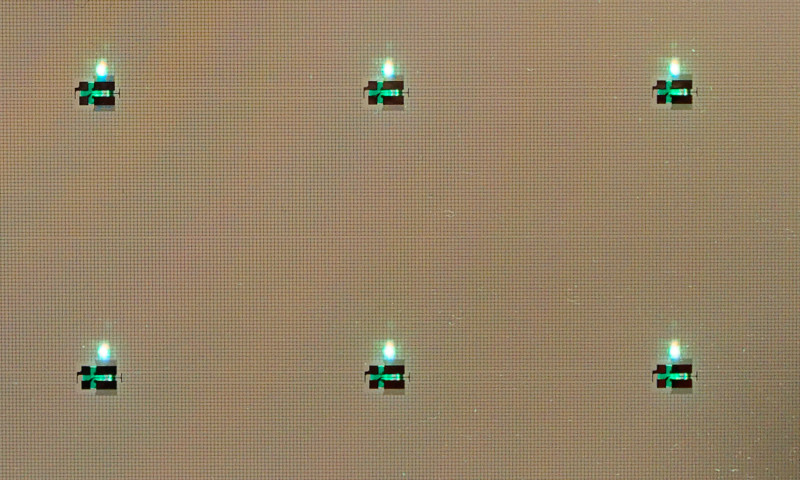LG was at PTE for the second time. The company has been interested in the aviation market for some time, but started to really develop a full sales and support organisation to address the market around two years ago. It has seen some good success in Europe (Fraport, Greece and London Luton as well as Venice Airport). It also had a huge win in the US in Orlando. LG Sells 1050 Monitors to Orlando Airport
We mentioned the virtual control towers that we reported on last week from the ATM Congress in Madrid and it turns out that LG knows about it as the company is working with Searidge Technologies on the Heathrow project with NATS. It told us that there will be two 2 x 9 arrays of 4K cameras to capture the images. The project is being undertaken partly to look at what can be done if Heathrow wins the battle for an additonal runway.
The last control tower at LHR cost something like €70 million to build. A virtual tower would be much cheaper and LG staff told us that the cost is about the same as the annual cost of keeping the windows on the current tower clean! There is talk that the displays used might be 65″ OLEDs, but the project is at an early stage. We asked about screen burn, but LG said that as the image is the same all the time, “It shouldn’t be a problem”. Staff told us “Our technical team has some improvements coming” – we advised them not to hold their breath!
There were no new hardware products, as all the new products were rolled out at ISE, but there was a proposed application of the transparent OLEDs that LG had shown. The idea is to use the transparent displays to display information about planes moving on the ground so that the system becomes an ‘augmented reality’ system. At PTE, the images from the background were also on the OLED, but that would not be the case in the application.
 LG showed its transparent OLED with the background and the overlaid data. Imasge:Meko
LG showed its transparent OLED with the background and the overlaid data. Imasge:Meko
The OLEDs have FullHD resolution and 400 cd/m² output. The transparency is 40% and we assume that this is achieved because LG has an RGBW architecture and where the W subpixel is, the light transmission should be high, although we didn’t get a shot close enough to be sure about that.
(It seemed to us that this was the wrong event for this application – it should have been at the World ATM event in Madrid.)
The company is keen to promote its OLEDs and had a 360º multiple OLED display at the top of the stand.

LG showed its ‘film-based LED’ at last year’s ISE, but it was monochrome only. At ISE, the company updated it to colour, but we didn’t find a specialist to discuss it. That changed in Stockholm and we had an interesting chat with an engineer from LG in Korea. The controller is much smaller than last year. The controller is in a deeper bottom ‘rib’ but this is thinner in higher vertical modules, whereas the system was thick all the way up last year. The PCB has been made much smaller and each rib drives panels to each side. Each base rib can support up to 27 additional panels, so the displays can be very large.
The LEDs are mounted on film, but that film is then fixed to glass with optically coupling adhesive. As anybody who has tried to put a protective film on a smartphone without getting bubbles can testify, this is not the simplest engineering challenges and is one of the areas where LG is working hard at the moment, with a target to launch commercial products around the end of Q2, although there are still some quality issues to be signed off, so that could slip.
 LG’s Transparent LED is film-based on glass. Image:Meko. Click for higher resolution.
LG’s Transparent LED is film-based on glass. Image:Meko. Click for higher resolution.
The film LED is very much a system integrator product and LG is actively looking for partners that might want to help the company bring the product to market and develop applications and installations. As well as airports, LG sees opportunities in other transport segments including train stations.
Brightness is currently 1,000 cd/m², but could be higher if there is sufficient demand for more. Although the LEDs would get hot, there is a lot of glass to disperse the heat. The pitch is 24mm, while transparency is 73%.

